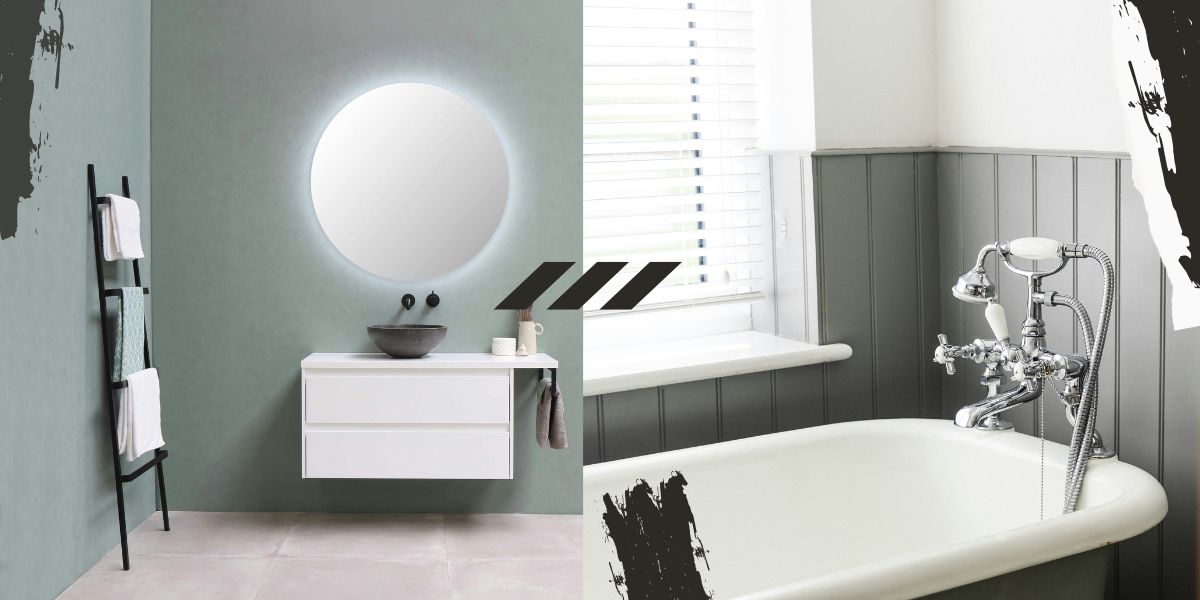0330 133 2915

Modern vs. Traditional Bathrooms: Which Style Suits Your Home?
Modern vs. Traditional Bathrooms: Which Style Suits Your Home?
When it comes to remodelling or designing a bathroom, the choice between modern and traditional styles can be overwhelming. Both modern and traditional bathrooms have their own distinct characteristics, benefits, and aesthetic appeals. In this comprehensive guide, we'll dive deep into the world of modern vs. traditional bathrooms to help you decide which style best suits your home.
Design and Aesthetics
Modern Bathrooms:
- Clean Lines and Minimalism: One of the hallmarks of modern bathrooms is their clean lines and minimalistic design. These bathrooms often feature simple geometric shapes and a clutter-free environment, which can create a serene and relaxing atmosphere.
- Innovative Materials: Modern bathrooms frequently utilize innovative materials such as glass, stainless steel, and concrete. These materials not only contribute to the sleek, contemporary look but also offer durability and easy maintenance.
- High-Tech Features: Incorporating the latest technology is a key aspect of modern bathrooms. From smart showers and digital faucets to LED lighting and heated floors, these high-tech features enhance functionality and luxury.
- Open and Airy: Modern bathroom designs emphasize space and light. Large windows, frameless glass shower enclosures, and floating vanities help create an open and airy feel, making even small bathrooms appear more spacious.
Traditional Bathrooms:
- Classic Elegance: Traditional bathrooms exude timeless elegance with their classic fixtures and detailed craftsmanship. Clawfoot tubs, pedestal sinks, and ornate mirrors are common features that add a touch of vintage charm.
- Warm Colour Palettes: Traditional bathrooms often use warm colour palettes, including soft pastels, creams, and rich, dark woods. These colours create a cosy and inviting atmosphere, perfect for relaxation.
- Natural Materials: Wood, marble, and stone are commonly used in traditional bathrooms, adding natural beauty and warmth. These materials also lend a sense of permanence and quality.
- Vintage Fixtures: Antique or vintage-inspired fixtures, such as brass faucets, decorative lighting, and intricate tile work, are key elements in traditional bathroom design. These features add character and a sense of history to the space.
Functionality and Practicality
Modern Bathrooms:
-
Space Efficiency: Modern bathrooms are designed with functionality and space efficiency in mind. Features like wall-mounted toilets and vanities not only save space but also make cleaning easier.
-
Storage Solutions: Built-in storage solutions, such as recessed shelves and cabinets, help keep the space organized and clutter-free. This is especially important in smaller modern bathrooms, where every inch of space counts.
-
Easy Maintenance: The minimalistic design of modern bathrooms often translates to easier maintenance. With fewer nooks and crannies to clean, these bathrooms can be kept looking pristine with minimal effort.
Traditional Bathrooms:
-
Ample Storage: Traditional bathrooms often feature larger vanities and cabinets that provide ample storage space for toiletries and linens. This makes it easier to keep the bathroom tidy and organized.
-
Comfort and Luxury: Comfort and luxury are paramount in traditional bathroom design. Features like deep soaking tubs, plush upholstered seating, and soft, warm lighting create a spa-like retreat within your home.
-
Attention to Detail: Traditional bathrooms prioritize craftsmanship and attention to detail. Custom cabinetry, intricate tile work, and hand-finished fixtures result in a space that feels personalized and well-thought-out.
Cost Considerations
Modern Bathrooms:
- Variable Costs: The cost of a modern bathroom can vary widely depending on the materials and technology used. While high-tech features and innovative materials can add to the cost, there are also many affordable options available.
- Energy Efficiency: Many modern bathrooms are designed with energy efficiency in mind. Low-flow toilets, LED lighting, and energy-efficient heating systems can reduce long-term utility costs, making these bathrooms environmentally friendly and cost-effective in the long run.
Traditional Bathrooms:
- Potentially Higher Costs: The use of high-quality, natural materials and custom fixtures can make traditional bathrooms more expensive to install. However, the timeless appeal and durability of these materials can justify the investment.
- Long-Term Value: The classic and enduring appeal of traditional bathrooms can add long-term value to your home. Potential buyers often appreciate the quality and craftsmanship of a well-designed traditional bathroom, making it a worthwhile investment.
Final Thoughts
When it comes to choosing between modern vs. traditional bathrooms, there is no one-size-fits-all answer. Your decision will depend on your personal style preferences, the overall design of your home, and your practical needs. Modern bathrooms offer a sleek, efficient, and contemporary feel that appeals to those who appreciate simplicity and the latest technology. On the other hand, traditional bathrooms provide a warm, elegant, and timeless appeal that suits those who value classic design and intricate details.
Whichever style you choose, ensure it reflects your personality and meets your everyday needs. By understanding the key differences and benefits of modern vs. traditional bathrooms, you can make an informed decision that enhances both the functionality and aesthetic appeal of your home.

